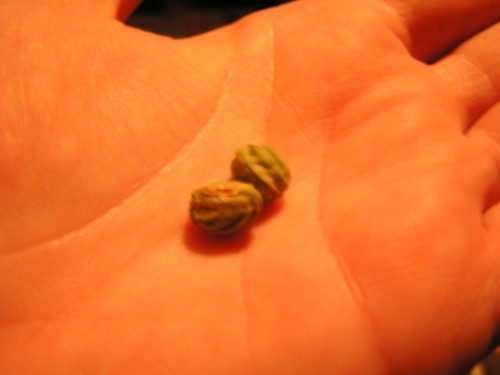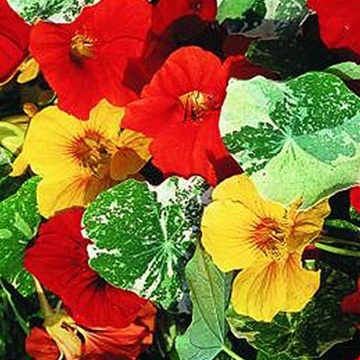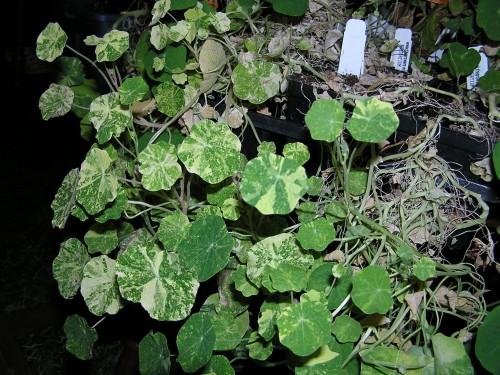*Our Marketing and Social Media Director, Caroline has been attempting to turn her brown thumb green since she began working here, and it looks like she may be getting the hang of it!*
This past fall I salvaged some ‘Alaska Mix’ and ‘Empress of India’ Nasturtiums who were at the end of their season and growing closer to being composted. I decided it would be a great winter project to try to keep these creeping beauties alive in my kitchen for their culinary value (their leaves, blooms and seeds are all edible!) and it would be a great test to see how green my thumb had grown since joining The Growers Exchange team. Though light is a little scarce since neighboring buildings block it for most of the day, and my cats terrorize the curtain-like foliage by using it as cover (and as a snack), I’ve managed to keep the majority of these guys green and somewhat healthy! It’s been interesting to see how at different points of the day the foliage will crane their stems to follow the sunlight as it moves across my kitchen, like these herbs have a mind of their own!
While watering the other day, I readjusted some of the variegated, viney leaves to allow more of the ‘Alaska Mix’ to get more light and two, hard, green little nodes fell off! At first I thought this was some kind of pest or bug that had invaded my little indoor oasis, but after some research and thorough poking with my finger, I realized that my plant had started to go to seed. These light green seeds are rounded on one side and sort of pinched and puckered looking on the opposite side, and can apparently be prepared with hot vinegar to create “poor man’s capers”. These pretty annuals have been trying to go to seed all season and thus, end their life cycle. Keep yours blooming by continuing to prune dying foliage back and to deadhead them which will prevent the process of going to seed and keep them vibrant for much longer. I’m going to try to plant these alien-looking little seed pods and see if I can sprout some more of these awesome spiller herbs!

'Alaska Mix' Nasturtium seeds
I also recommend growing these indoors to any novice or brown thumb, like myself, or to anyone who has kids. The Nasturtium‘s non-toxic, edible leaves make a beautiful contrast to their bright, continuous blooms, and because they grow quickly and can take a little abuse or neglect. Though I need to repot mine, as they’re getting too big for their britches, I’d recommend a hanging pot or container to hang them in a sunny window. This way, their leaves and tendrils can have room to stretch and grow, and they’ll be out of the way of little furry monster who may try to dine on them. These Nasturtiums, along with a few Calendula (which I haven’t been as successful with) have been a true delight during these dreary, cold months. Just a little green around your home can make a huge difference in picking up your spirits while it’s gross and gray out. Try growing some today– they’re a great first time herb plant!



Just a thought/question…I save seeds every year…they start and go like gang busters…but second gneration doesn’t produce seed…is this a product of hybriding? Nasturtiums are some of my favs.
It could be a number of things. It may be a case of genetic break down– If the original seed was derived from a hybrid or weak cultivar, over time the plant may fail to produce because of its original parent plant. It may also be an issue with a Botrytis fungal infection that affected the plant’s ability to produce seed. This type of fungus is caused by the presence of too much moisture content, and it hibernates in dead plant material. Even though it’s commonly known as “gray mold” you may not actually see mold itself, it could be in the soil, attacking your Nasturtiums from the roots up. Did you reuse potting soil or the planter you potted them in? Try sterilizing everything this spring for new plants (if you haven’t previously) and see if that gives you better results. I’m sorry to hear that you had this problem, and please let us know if you continue to see this happen!